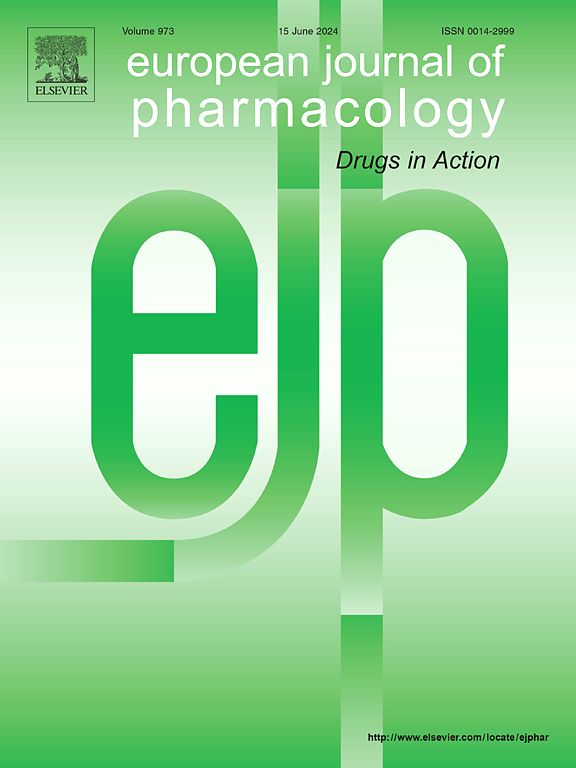Optimizing dose selection for doxorubicin-induced cardiotoxicity in mice: A comprehensive analysis of single and multiple-dose regimens
IF 4.2
3区 医学
Q1 PHARMACOLOGY & PHARMACY
引用次数: 0
Abstract
Objective
To provide evidence-based dosing recommendations for doxorubicin (DOX)-induced acute and chronic cardiotoxicity models in mice.
Methods
A systematic literature search was conducted in PubMed, Web of Science, CNKI, Wanfang, and VIP databases (January 2015–October 2024) for studies on DOX-induced cardiotoxicity in mice.
Results
Analysis of 808 studies from 736 articles revealed 182 unique mouse models, including 21 single-dose and 161 multiple-dose regimens. For single-dose protocols, the most common administered doses were 10, 15, and 20 mg/kg. Cardiotoxicity was effectively induced at a single dose of 15–20 mg/kg, with higher mortality observed at 20 mg/kg compared with 15 mg/kg. For multiple-dose regimens, the most prevalent protocol is 5 mg/kg administered weekly for 4 weeks, accounting for 21.23 % of relevant studies. Besides, across different dosing intervals, the median single dose ranged from 2.5 to 5.5 mg/kg, given 3–6 times, with a median cumulative dose of 15–20 mg/kg. Notably, cumulative doses of 15–24 mg/kg reliably induced cardiac injury, but survival rates declined at doses ≥20 mg/kg.
Conclusion
For acute cardiotoxicity, a single dose of 15 mg/kg is recommended. For chronic cardiotoxicity, two regimens are proposed: (a) the widely used 5 mg/kg weekly for 4 weeks, or (b) a flexible regimen of 2.5–5.5 mg/kg per dose, administered 3–6 times, with a cumulative dose of 15–20 mg/kg, adjustable based on experimental requirements.
阿霉素诱导小鼠心脏毒性的最佳剂量选择:单剂量和多剂量方案的综合分析。
目的:为多柔比星(DOX)诱导的小鼠急慢性心脏毒性模型提供循证给药建议。方法:系统检索PubMed、Web of Science、CNKI、万方、VIP等数据库(2015年1月- 2024年10月)关于dox致小鼠心脏毒性的相关文献。结果:对来自736篇文章的808项研究进行分析,发现了182种独特的小鼠模型,包括21种单剂量方案和161种多剂量方案。对于单剂量方案,最常见的给药剂量为10、15和20 mg/kg。单次剂量15-20 mg/kg可有效诱导心脏毒性,与15 mg/kg相比,20 mg/kg的死亡率更高。对于多剂量方案,最普遍的方案是每周给药5mg /kg,持续4周,占相关研究的21.23%。此外,在不同给药间隔中,单次给药的中位剂量范围为2.5 - 5.5 mg/kg,给药3-6次,中位累积剂量为15-20 mg/kg。值得注意的是,15-24 mg/kg的累积剂量可靠地诱导心脏损伤,但剂量≥20 mg/kg时存活率下降。结论:急性心脏毒性推荐单次剂量为15mg /kg。对于慢性心脏毒性,提出了两种方案:(a)广泛使用的每周5mg /kg,持续4周,或(b)灵活的方案,每次剂量2.5-5.5 mg/kg,给药3-6次,累积剂量为15- 20mg /kg,可根据实验要求调整。
本文章由计算机程序翻译,如有差异,请以英文原文为准。
求助全文
约1分钟内获得全文
求助全文
来源期刊
CiteScore
9.00
自引率
0.00%
发文量
572
审稿时长
34 days
期刊介绍:
The European Journal of Pharmacology publishes research papers covering all aspects of experimental pharmacology with focus on the mechanism of action of structurally identified compounds affecting biological systems.
The scope includes:
Behavioural pharmacology
Neuropharmacology and analgesia
Cardiovascular pharmacology
Pulmonary, gastrointestinal and urogenital pharmacology
Endocrine pharmacology
Immunopharmacology and inflammation
Molecular and cellular pharmacology
Regenerative pharmacology
Biologicals and biotherapeutics
Translational pharmacology
Nutriceutical pharmacology.

 求助内容:
求助内容: 应助结果提醒方式:
应助结果提醒方式:


